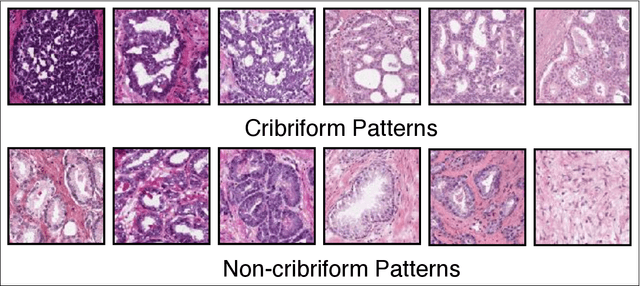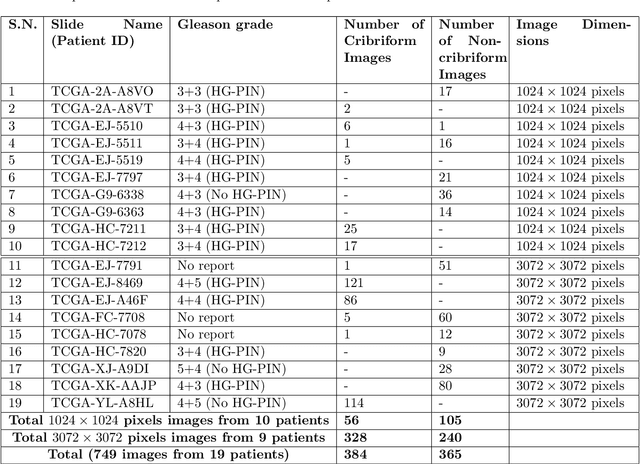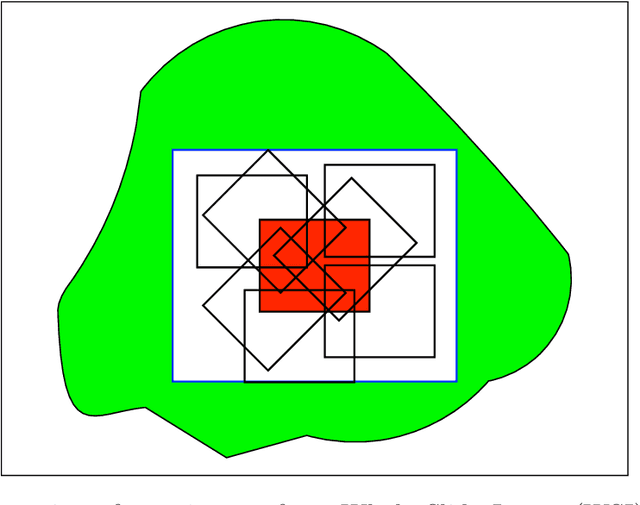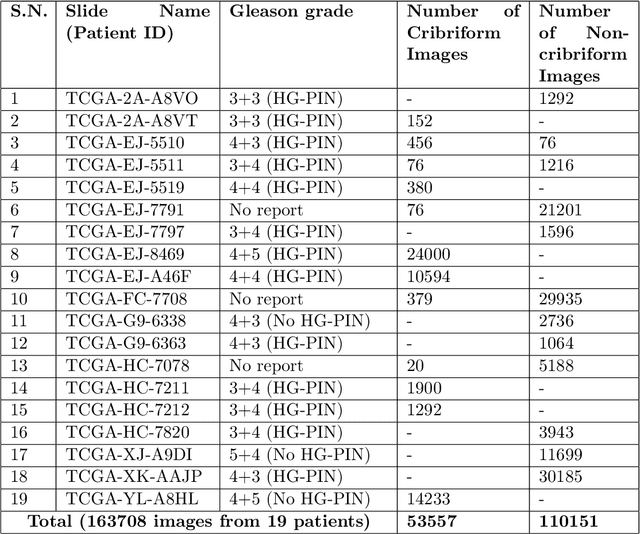Emarene Mationg Kalaw
Cribriform pattern detection in prostate histopathological images using deep learning models
Oct 09, 2019



Abstract:Architecture, size, and shape of glands are most important patterns used by pathologists for assessment of cancer malignancy in prostate histopathological tissue slides. Varying structures of glands along with cumbersome manual observations may result in subjective and inconsistent assessment. Cribriform gland with irregular border is an important feature in Gleason pattern 4. We propose using deep neural networks for cribriform pattern classification in prostate histopathological images. $163708$ Hematoxylin and Eosin (H\&E) stained images were extracted from histopathologic tissue slides of $19$ patients with prostate cancer and annotated for cribriform patterns. Our automated image classification system analyses the H\&E images to classify them as either `Cribriform' or `Non-cribriform'. Our system uses various deep learning approaches and hand-crafted image pixel intensity-based features. We present our results for cribriform pattern detection across various parameters and configuration allowed by our system. The combination of fine-tuned deep learning models outperformed the state-of-art nuclei feature based methods. Our image classification system achieved the testing accuracy of $85.93~\pm~7.54$ (cross-validated) and $88.04~\pm~5.63$ ( additional unseen test set) across three folds. In this paper, we present an annotated cribriform dataset along with analysis of deep learning models and hand-crafted features for cribriform pattern detection in prostate histopathological images.
 Add to Chrome
Add to Chrome Add to Firefox
Add to Firefox Add to Edge
Add to Edge